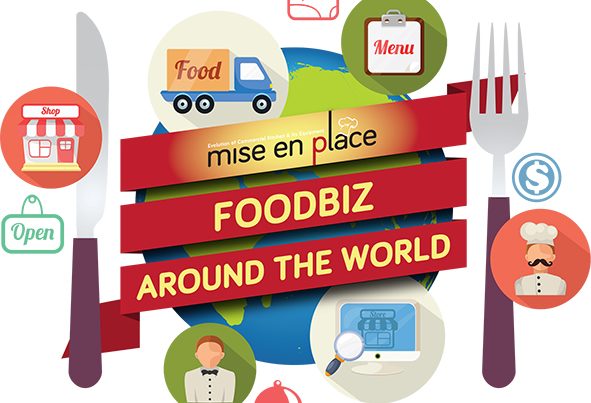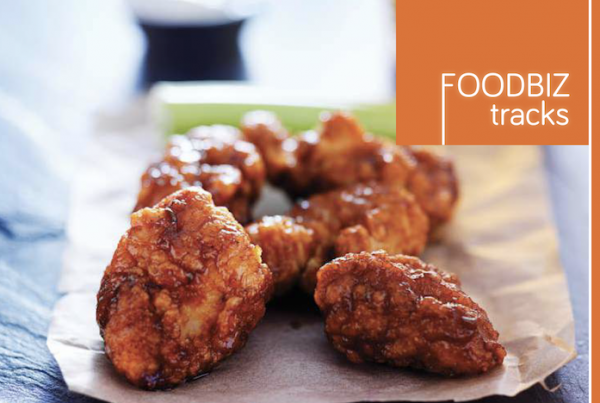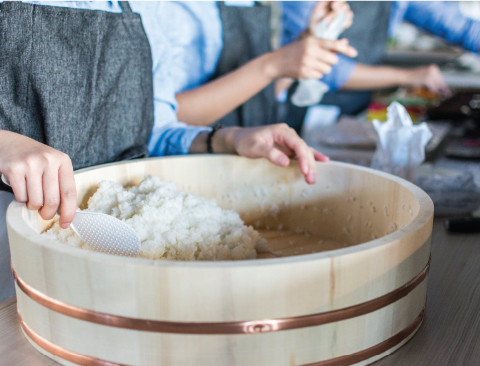
THE FOUNDATIONS, RICE & NOODLES
The Japanese are known for their two-sided love – rice and noodles. Rice, either boiled or steamed, is served at every meal, incorporating much of short-grained, sticky, and relatively sweet rice with much reverence. Meanwhile, noodles come in varieties. This includes udon, thick white noodles made from wheat flour; soba, thin brown noodles made from buckwheat flour; and ramen, thin, curly noodles, also made from wheat flour.
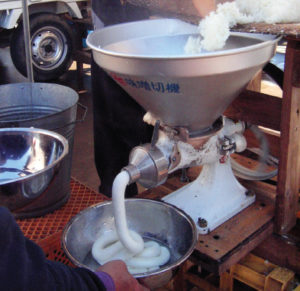 The Science of Mochi Pounding
The Science of Mochi Pounding
As we consider the significance of rice in the Japanese food culture, we can’t help but to shed some light on mochi – little steamed rice cakes made by pounding steamed glutinous rice with huge hammers. This traditional preparation method used to this day in Japan often displays professional mochi pounders working up in sweat as they practice pounding sticky rice to make Japanese mochi rice cake.
The process is known as mochitsuki, which requires two essential tools – an usu, a large semi-circle carved out container, and a kine, similar to a pestle. In the modern culinary age, more Japanese restaurants are replacing these tools with mochi encrusting and filling machines, coupled with mochi steam kneading machines. The first machine loads the tanks with sticky rice pastes and desired filling to automatically form uniformed mochi balls, with adjustable size and appropriate texture. Then it is passed on to a steam kneading machine that spins and kneads the rice.
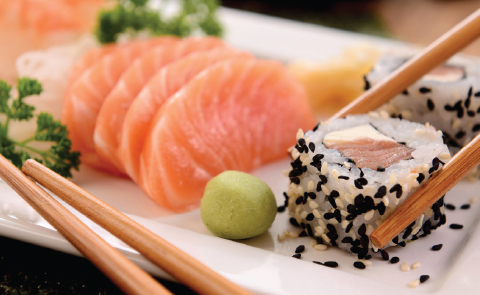
SUSHI & SASHIMI
The word “sushi” is one synonymous to Japanese food. Sushi is fresh raw seafood coupled with rice while sashimi is fresh raw seafood served with soy sauce. Both of these known Japanese offerings rely on freshly caught fish or seafood.
While Japanese cuisines are highly recognised, appreciated, and enjoyed all around the world, it is largely due to the fact that sushi has transcended across nations and continents, making a mark of uniqueness through its variety and taste. In fact, the spread of ¥100 kaitenzushi (conveyor belt sushi) restaurants made sushi one of the fastest homegrown fast-food even compared to giants like McDonalds.
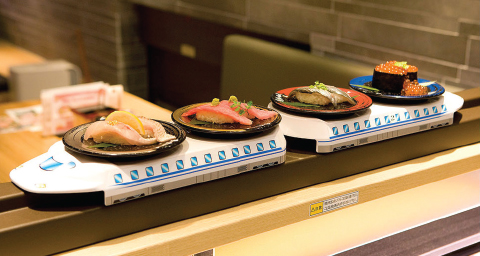
Sushi Restaurants
Some restaurants dedicate to serving sushi, yet the daily activities of this business are similar to those of any restaurant. Often, the restaurant either serves Japanese or Asian cuisine to customers alongside sushi. What makes some sushi restaurants stand out is having a special sushi bar that allows interested customers to watch their sushi getting prepared.
With a high growth potential for a sushi restaurant, it is no surprise that as an industry, the sushi restaurant revenue keeps growing in Asia. In fact, in Malaysia, Texchem Resources Bhd recently announced that the group will spend about RM80mil to open 80 new Sushi King outlets in the country until 2021. Group Executive Chairman, Tan Sri Fumihiko Konishi, further described that the restaurant business of Sushi King is booming and growing at a high percentage yearly, allowing more resources to be fuelled into its expansion.
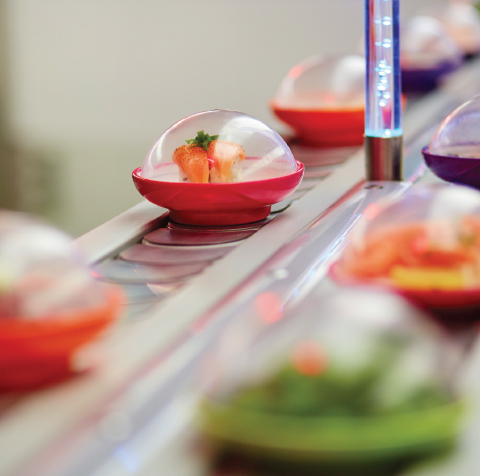
Sushi Delivery Systems
On things to love about sushi, according to Andrew Bender who wrote in the Los Angeles Times is “sushi and automation, mashed together with style and fun”. While conveyor-belt systems are a stylish and effective way of showcasing food, monorails are equally complementary among sushi restaurants. The monorail is a food delivery system in Japanese restaurants that delivers food to consumers within the shortest amount of time, avoiding longer waiting time.
Genki Sushi, a Japanese sushi chain expanding throughout Asia, is known for its conveyer belt style of food service and monorail delivery system. Upon arrival, customers enter their name in a kiosk accompanying details of the number of people in their group. A receipt and order number is printed, then called out as a real-life person escorts the diner to a seat. Upon being seated, all menu items are delivered by an automated monorail which reaches customer’s seat.
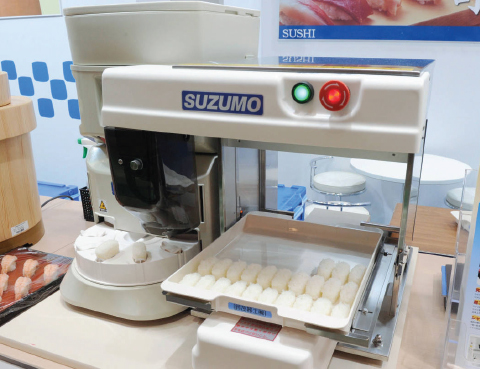
Sushi Robots
This automation is also taken to a different level with the presence of sushi rice sheet makers, sushi roll makers, sushi role cutters, and many more. Automated sushi production appears to be a growing sector over the year, and some companies such as Robotic Sushi and Taiko Enterprises have greatly contributed to the making of “sushibots”. In fact, according to the Guinness Book of World Records, Joakim Lundblad is the world’s fastest sushi roller with a record of 12 rolls in two minutes. While most machines cost at least a few thousand dollars, it might actually be cheaper to opt for a mechanical sushi maker in the long run.
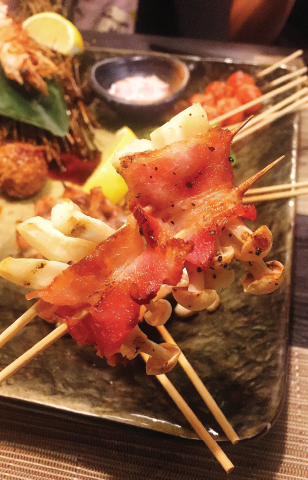 YAKITORI
YAKITORIYakitori is a Japanese dish consisting of bite-sized pieces of chicken, skewered and roasted over a grill, typically a charcoal grill. Commonly eaten as a snack with drinks, or as a whole meal, yakitori is a popular Japanese food that brings the casual dining style. More often than not, yakitori offers the different flavours of each part of the chicken, such as momo (thigh), mune (breast), and kawa (skin), which are available at almost any yakitori bars. In some shops, more unusual parts may or may not be available according to its offerings.
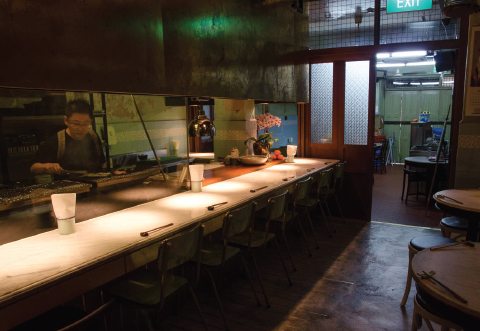
Yakitori Bars
The culture that tells the popularity of yakitori, however, traces back to the mid 1900s. Following the end of WWII during the time of a stable supply of chicken, yakitori shifted from being a delicacy to a daily food. Company workers began to habitually stop in at shops selling yakitori and enjoy some food with drinks after work. And that appears to continue up to this day.
Yakitori is served in many Japanese restaurants that offers other types of Japanese food, especially outside Japan. In Japan and some parts of the world, the dish is served at specialty yakitori bars known as “yakitoriya” or “tori-ryoriya”, and izakaya restaurants, which is almost a Japanese gastropub. Because yakitori is comfort food to many, operating at high-end or low-rent location does not really matter, which is a tried-and-true formula for many yakitori bars.
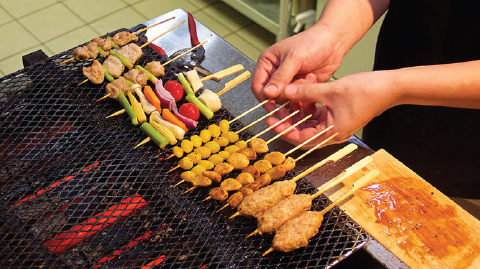
Commercial Charboilers for Yakitori
It is almost impossible to serve yakitori in a yakitori bar without having the right chargrilled flavour in the meat. One equipment that plays a major role in ensuring this happens is commercial charboilers.
Charbroilers give customers the BBQ taste they are craving for, be it countertop charboilers, floor model charboilers, or outdoor charboilers. Underneath the grates, some charbroilers will have lava rocks or ceramic briquettes or a combination of both, and often, they are fuelled by electricity, gas, wood or charcoal. While some use radiant heat as their source of heat, others use infrared.
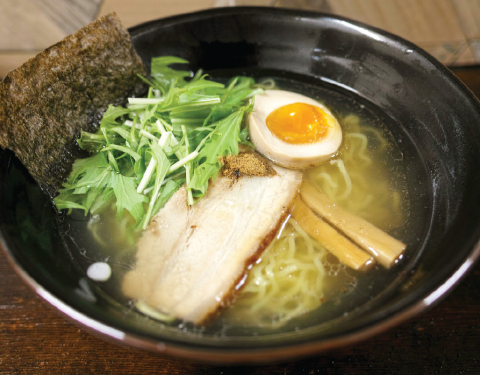
RAMEN
We have all heard of the spicy ramen challenge. In fact, Big Bang’s youngest member, Seungri, even opened his famous ramen joint, Aori Ramen in Kuala Lumpur not long ago. And it goes beyond that – as corporate restructuring leading to layoffs occured in the 1990s in Japan, the media and various publications began discussing ways one can start up a ramen shop to generate income and become a self-employed entrepreneur. That’s how serious people consider ramen to be!
In fact, ramen, with its origins in Chinese lamian, is considered a national dish of Japan. Instant noodles have long been a favourite junk food for many people, but now, ramen restaurants and bars are popping up everywhere while non-Japanese chefs are creating their own interpretation of the Japanese noodle dish with an interesting fusion of local ingredients.
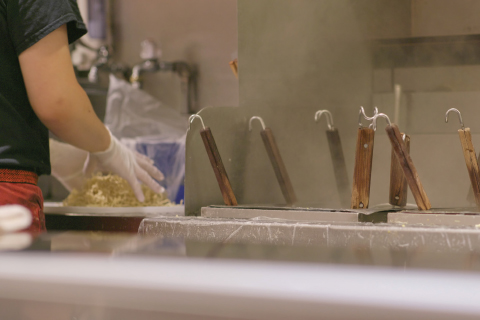
Ramen Restaurants
A ramen restaurant typically specialises in ramen dishes, that often come with gyōza. While some ramen restaurants prepare their foods in-house which is “from scratch”, especially for broths and soups, some others use pre-packaged prepared noodles alongside other prepared ingredients.
In Malaysia, Japanese ramen shops are thriving. Famous Japanese ramen brands have been making an entry in the Malaysian market consistently in the recent years following the entry of sushi and shabu shabu hot pot restaurant chains in the Southeast Asian region. In the United States, ramen shops is already making is mark in many cities and states, much recently in = New York City, Chicago, and Los Angeles.
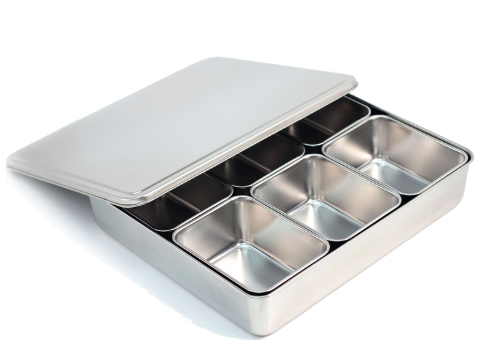
Ramen Essentials
For anyone running a serious ramen restaurant business, the big guys such as noodle boilers and automatic noodle boiling machines are definitely an envy. Yet, the small things equally matter. Having the right ramen bowls, renge spoons and chopsticks, noodle strainers, ladles for ramen, refractometers, and soup pot for a ramen restaurant makes a huge difference.
Yakumi Mise En Place pans for ramen is one that particularly stands out. These “mise en place” containers is where all ingredients are prepared and ready to enter the busy kitchen. By doing so, the pans eliminate the preparation time needed for ingredients and save time to serve dishes to customers.
In Japan and other parts of the world, these pans set the standard as most chefs use yakumi ire pans for their mise en place for ramen making. Yakumi pans usually offer six removable compartments that helps to organise the process of ramen making, while being able to keep ingredients at the optimum temperature.
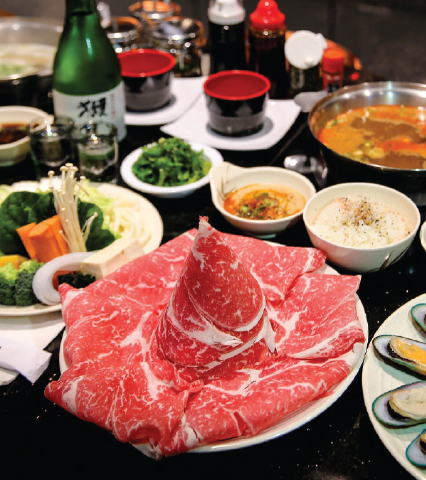
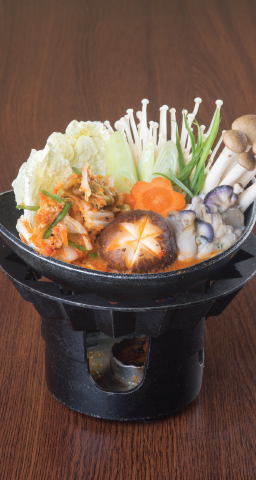
SHABU SHABU & SUKIYAKI
Also known as Japanese hot pot, this popular dish style of nabemono cooks together paper-thin slices of tender meat and fresh vegetables in a large open pot. Unlike other types of hot pot, shabu-shabu ingredients are cooked together before serving, served raw, and cooked tableside during the meal, similar to fondue. Shabu shabu gets its name from the Japanese onomatopoeia for “swish, swish,” as each piece of meat is lightly swished around in boiling broth before eating.
Like shabu shabu, sukiyaki is another Japanese dish that is prepared and served in the nabemono style. It involves the slow cooking or simmering of meat at the table, together with vegetables and other ingredients, in a shallow iron pot in a mixture of soy sauce, sugar, and miri.
Shabu shabu and Cooking Pot
Shabu shabu can be eaten at specialty restaurants that use pots to boil and cook the ingredients. While there are no specific requirements as to what kind of pot to use, the pot should be able to hold plenty of broth. This is why most shabu shabu restaurants use the specially designed shabu shabu pot with a chimney in the middle, a shape that originates from China. In a time there were no stoves in China, people used this pot by putting charcoal in the central chimney.
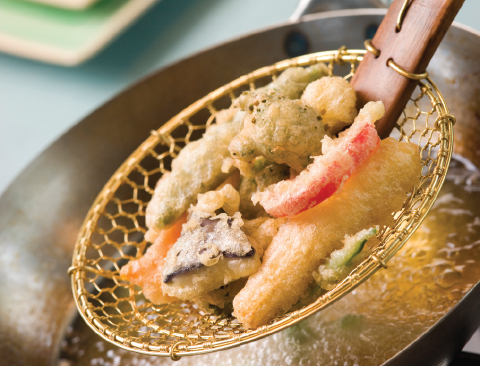
TEMPURA
Tempura is an assortment of battered and deep-fried ingredients, a type of cuisine that marks the uniqueness of Japanese food. Although tempura is generally known as crispy Japanese prawns, the dish has differences across the different regions in Japan. Outside Japan (as well as recently in Japan), tempura comes across many non-traditional re-creations and fusions. Tempura Restaurants
The growing number of tempura restaurants and bars in South East Asia shows that a great deal of people are seeking authentic Japanese cuisines. Tempura dishes are included by chefs all over the world on their menus, using various batters and ingredients. Taiwan, in particular, is hosting a large number of Japanese eateries, especially for specialty cafes and bowl-type restaurants, rather than those serving a broad range of Japanese food. One among the many, Royal Holdings, operator of the Tenya chain of tempura restaurants, envisions to have 50 overseas locations by 2020, mostly in Asia. In fact, according to JETRO estimates, there were over 9,000 Japanese-style restaurants in Taiwan, including those run by locals, as of March 2018.
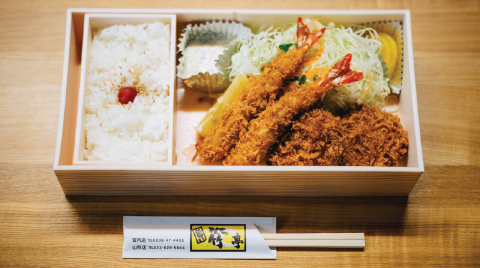
Classic Deep-Frying Wok
For many, deep frying is too greasy, fattening, and a mess. But that only happens when the frying technique is not done right. While there are modern equipment that make deep frying of tempura easier, deep-frying in a wok is equally ideal because its concave shape requires less oil than a regular pot, and the roominess of the wok allows you to fry more food at one time without crowding, which means frying in fewer batches. The secrets to avoiding the mess in a commercial restaurant lies in filling the wok with oil not more than half.
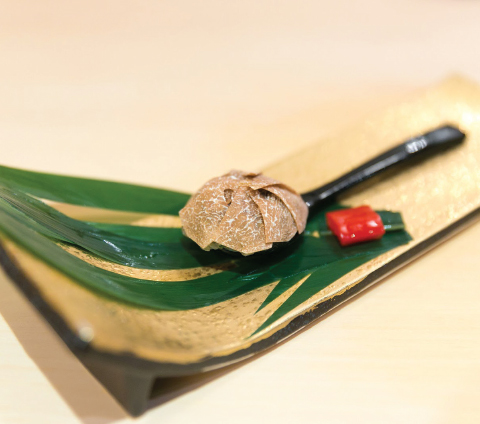
OMAKASE
The word “omakase” simply means “I’ll leave it up to you”. It comes from the Japanese tradition of allowing a chef to choose and prepare the patron’s order, which gives chefs the freedom to be creative and give customers a memorable dining experience. Omakase is considered a request for a wonderful meal that usually represents an excellent value. If one have trusted the chef, this is expected to be reciprocated with the best of everything at a value price.
Another cuisine that comes to mind as we mention omakase is kaiseki. Although omakase is a spiritual companion yet a counterpoint to kaiseki, the key difference is kaiseki is a highly ritualised meal with a specific ebb and flow. Omakase, meanwhile, changes with each occasion, with the chef making decisions about what to cook mid-course. At the end of the meal in omakase, the restaurant will present the customer with a non-itemized bill.
In fact, we like how this is highlighted by academic and writer Trevor Corson in his book The Story of Sushi: “[Omakase is] what the sophisticated customer says to the chef when settling down at the sushi bar. Sushi connoisseurs seldom order off a menu. Traditionally, sushi bars in Japan didn’t even have menus.”
Omakase Restaurants
Omakase works best at restaurants that use daily fresh ingredients such as sushiya. Any restaurant that offers fresh fish or in-season vegetables are also likely to be a good omakase option, which makes Asia a fertile ground for the business. However, omakase doesn’t work well at chain restaurants, large restaurants or restaurants with limited ingredients such as a noodle shop. One thing omakase restaurants are also known for is counter seats and a viewable kitchen where most interaction with chef happens.
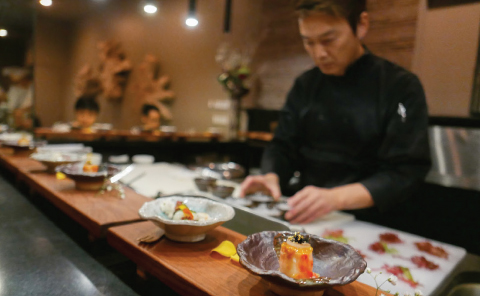
Back of the house
Some customers crave little more authenticity from our food offerings and the actual experience of dining, and that’s what the Japanese omakase menu offers. Often while customers are counter seated with the chef, they observe the “behind the scenes” of the chef, the kitchen and the cooks who churn out the menu.
And this is where omakase stands out. Everything from the thoughtful layout of the dining room to the changing menu has to reflect classic omakase sensibilities. While some omakase restaurants go as far as to have their culinary team serve the food, perceiving it as the best line of communication between the back and front, some other choose to pass it on to the front-of-house team. Yet, the only ones who know what is on the plate are the chefs.
Yet, with the gamble of trust and customisation, omakase restaurants are also being watched for everything that is being done on the spot in the kitchen and everything that is being used on the spot in the food preparation. The counter has to be large and spacious, the kitchen equipment has to reflect a fairly good food technology, and the private dining rooms must be well-equipped. Meat grinders and smokers, as well as an immersion circulator definitely makes a difference in an omakase kitchen.
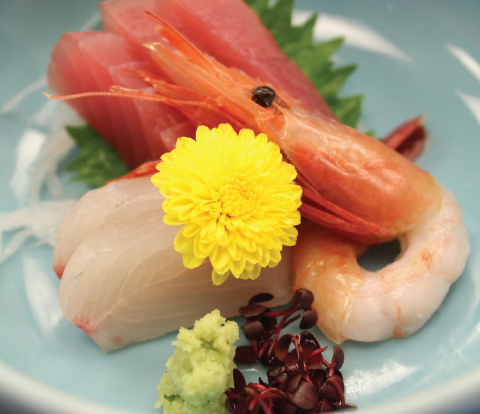
THE JAPANESE HAUTE CUISINE, KAISEKI
Kaiseki is a traditional Japanese cuisine, enjoyed either in the form of a tea ceremony or as a multicourse meal. Often regarded as the “Japanese haute cuisine”, kaiseki authentically roots out from washoku – a simple preparation of rice and side dishes made with a variety of seasonal ingredients. Washoku was claimed as an Intangible Cultural Heritage by UNESCO in 2013, in recognition of the social customs that have been passed down in Japan for over a thousand years. In the Chinese character, the word “washoku” combines “Japan” or “harmony”, and “food” or “to eat” which in layman term means the harmonious blend of ingredients for a nutritious and beautifully presented meal.
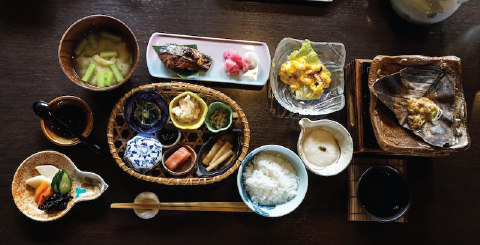
With origins in the delicacies offered to the imperial court, the types and order of foods served in kaiseki ryori are the basis for the contemporary full-course Japanese meal. This artful Japanese approach to food is traditionally served at tatami-matted ryokan Japanese inns and traditional Japanese restaurants in Japan, as well as in Japanese restaurants around the world dedicated to serve kaiseki. Kaiseki also brings a more relaxed atmosphere with fewer rules of etiquette. During the meal, local sake and appetisers are served first while rice is served at the end.
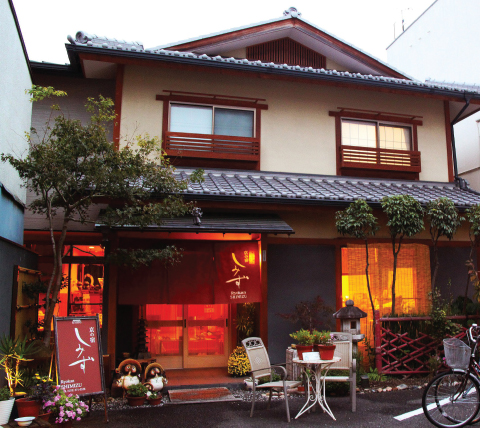
Ryokan Japanese Inns
Ryokans were a place for Japan’s nomadic samurai to rest hundreds of years ago. Now, this traditional, family-run Japanese inns that is usually sited next to a hot spring have become one of the places to explore in a traveller’s list. Many of them feature modern spins such as onsite Michelin-starred restaurants, robotic toilets and luxury spas, alongside elements such as tatami floors, Japanesestyle baths, and futon beds.
Cuisine is an integral part of the ryokan experience, and for many it is the highlight of the experience. Most ryokan stays include breakfast and a kaiseki dinner, both of which typically feature a beautifully-presented and colourful array of local and seasonal specialties. The kaiseki dinner is a multi-course affair, served either in the privacy of tatami-lined room, or in a common dining room. While every ryokan is different, the dinner usually includes the food offerings and drinks mentioned above. Breakfasts are just as colourful with a selection of traditional Japanese dishes such as fish, rice, miso soup, egg, and tea and/or coffee.
One 84-room ryokan inn which opened last year – the Hoshinoya ryokan in Tokyo’s Ōtemachi financial district, offers beautifully composed dishes served on handmade earthenware and lotus leaves. Menu includes sardine confit with smoked tuna skin or creamy pike eel roe inside a red flower – talk about aesthetics!
And wait, we have more for you!
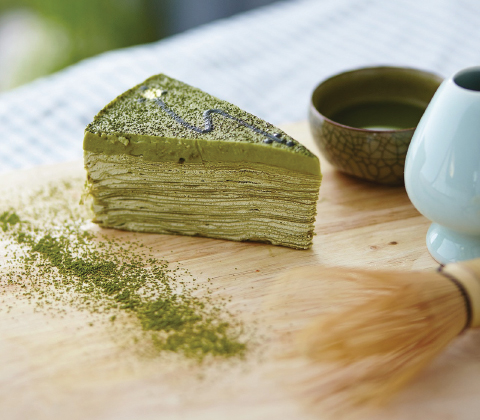
JAPANESE COFFEE & TEA
If rice is the food most identified with Japanese cuisine, then tea would be the equivalent beverage. Tea as an everyday beverage was established during the Meiji era besides being used as a medicine and for the highly distinctive Japanese tea ceremony.
Matcha, also known as green tea, is the most common type of tea in Japan despite the diversity of tea in the country. Matcha, hot or cold, can be found practically at all Japanese restaurants, modern vending machines, kiosks, convenience stores and supermarkets. In other parts of the world, matcha is an emerging trend. Green tea lattes can be found in certain global coffee chains, and matcha flavoured sweets and ice cream are available in stores all around
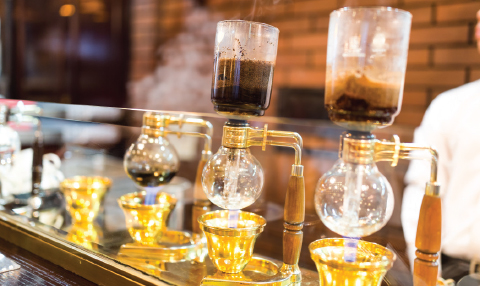
Siphon Coffee Maker
The Japanese siphon coffee is known for being the “thirdwave coffee” and for producing clean crisp and vibrant coffee. James Freeman, owner of the Blue Bottle Cafe in San Francisco, first made the headlines when he imported a specialty coffee brewing machine from Japan for $20,000. The machine was a “siphon bar,” designed to make siphon coffee – also called vacpot, vacuum-brewed, or siphon vacuum coffee.
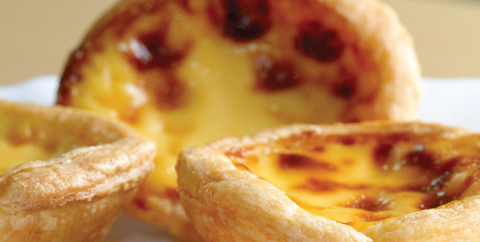
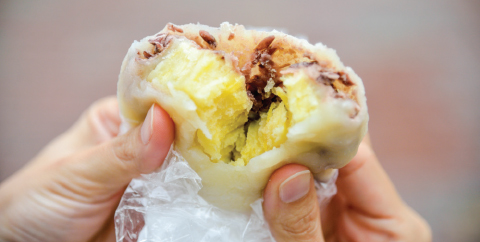
JAPANESE DESSERTS
Unlike other cultures, dessert after a meal is uncommon in Japan. Although desserts are relatively recent in this country, Japanese desserts feature many uncommon ingredients that brings about a unique flavour, such as red bean, green tea, sesame, rice flour, and potato. In fact, Japanese desserts were only an extension of the traditional tea ceremony designed to maximise the flavour of the tea being served.
DIY Candies
Yet, Japanese candy stores are an exception. Among the popular candy Japan offers are Japanese candy kits for making DIY Japanese candy treats, an area of increasing intrigue around the world. Available in brightly-coloured boxes and packages, these DIY candy kits enable kids to create fun and decorative sweets and candy.
Bakeries in Japan
The Japanese are also bread lovers. Japan is the 4th ranked retail bakery products market worldwide and the second in the Asia Pacific region with US$23.6 billion in terms of retail sales in 2015. In fact, the Japanese bakery industry is led by domestic players that are primarily artisanal bakeries and others who hold little more than half of market share. And matchaflavoured baked products certainly look promising to the progressive growth of this industry.
Hokkaido Baked Cheese Tart
As we speak about Japanese desserts, are you reminded of the ever famed Hokkaido cheese? Hokkaido Baked Cheese Tart, a Japanese-inspired Malaysian brand has been a household name in South East Asia since June 2016. Hokkaido Baked Cheese Tart has a network of stores across Shanghai, Singapore, Indonesia, Brunei, and Malaysia, and is bringing the trend to Australia. The international brand’s first Australian store opened in Melbourne. While cheese manufacturing in Hokkaido has been based on western methods, there are recent and consistent efforts to develop a Hokkaido original manufacturing method.







